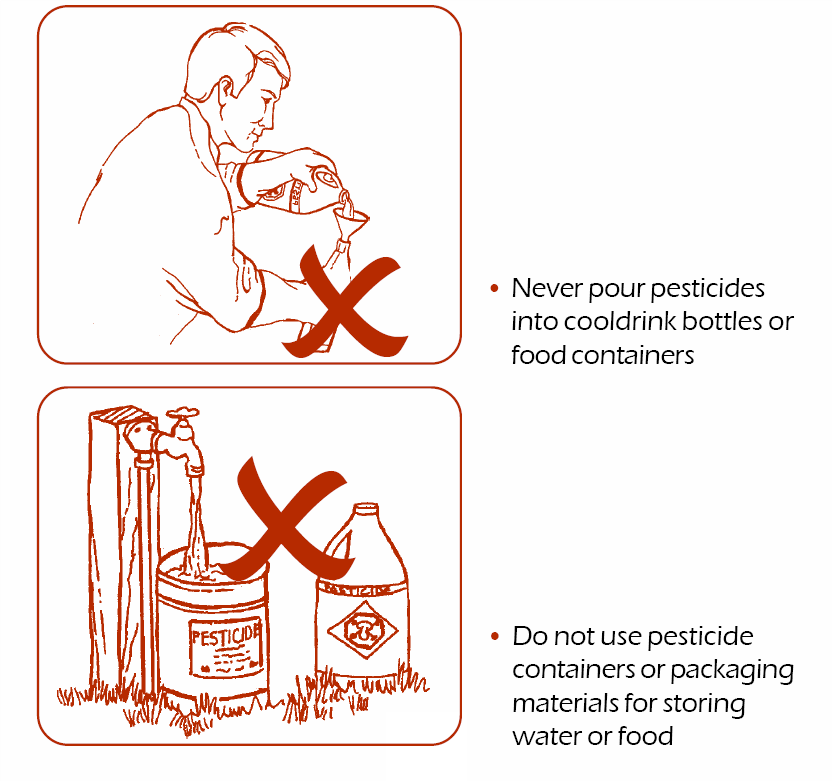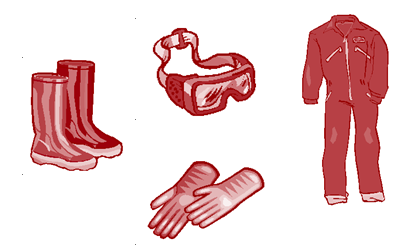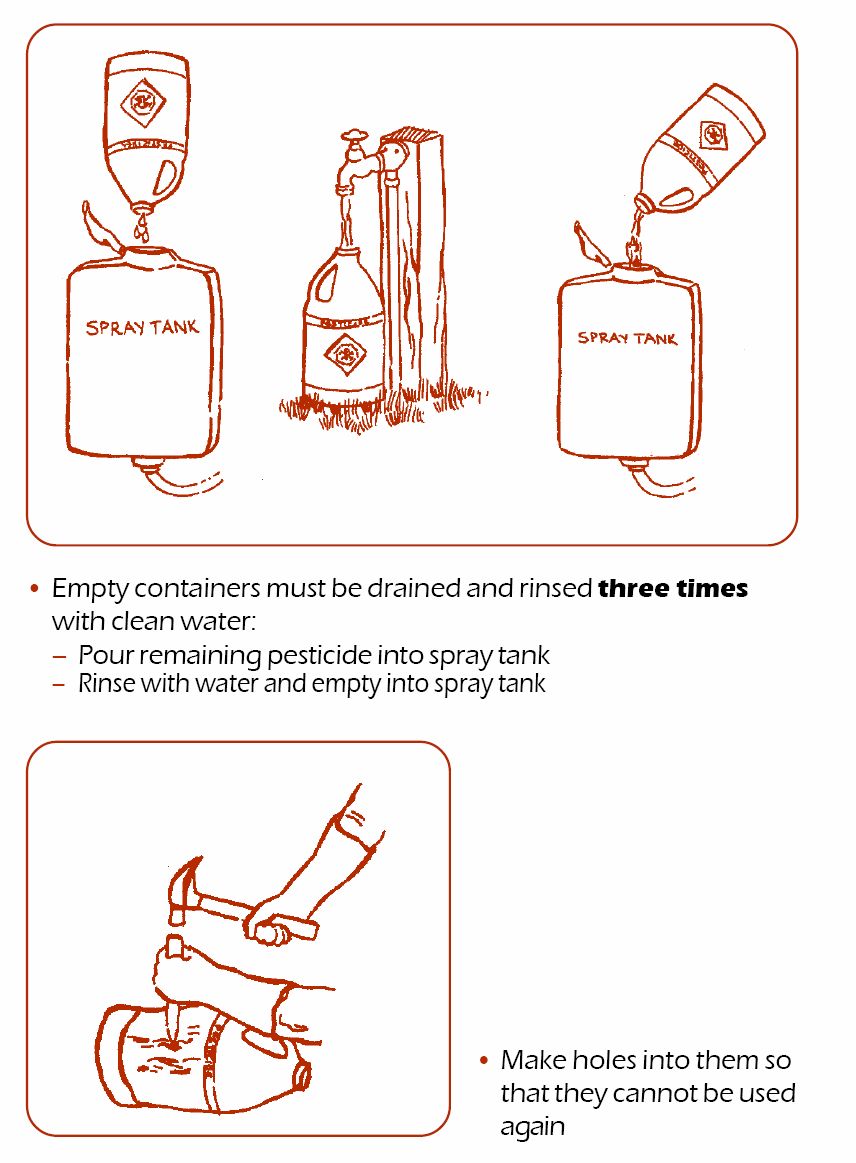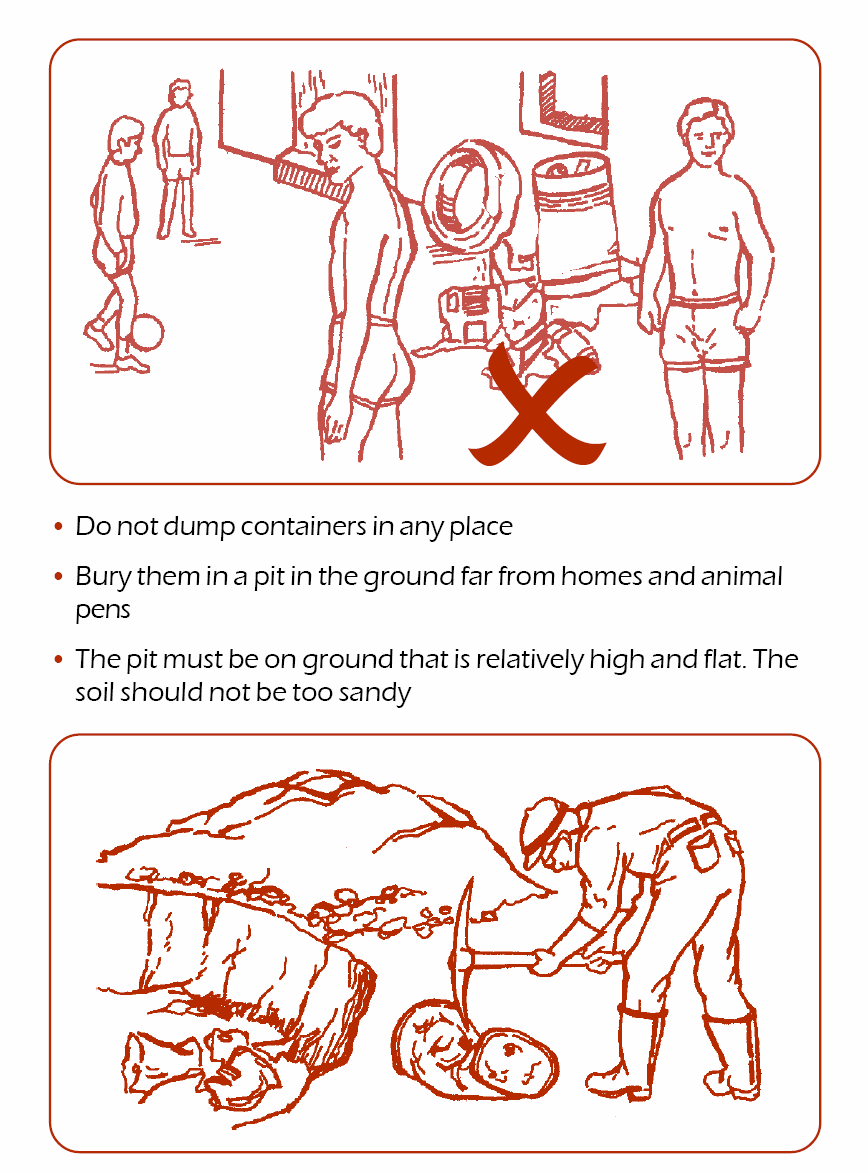Completion requirements
View
Click here to view a video that explains OHSA.
Safety
- Keep agro-chemicals locked away from children and untrained workers.
- Chemicals should be locked up in a separate store, away from feed, seed and fertiliser to avoid contamination by spillage or vapours from unstable chemicals.
- In the case of fire or floods, these materials will be confined to one area.
Read the Label Carefully
- Avoid poisoning
- Wash the applicator after you have used it.
- Keep away from the spray drift or dust cloud.
- Do not smoke, eat or drink while applying the pesticide.
- Take a bath when you have finished and put on clean clothes.
- Wash contaminated clothing.
When Working with a Pesticide you Should Wear:
- Rubber gloves
- Rubber boots
- A face shield
- An apron
Do not Harm the Environment
- Apply pesticides only when it is absolutely necessary.
- Keep to the dosage prescribed.
- Apply pesticides only on windless days.
- Choose pesticides that work quickly or that are safe to wildlife.
- Do not contaminate water by drift or when washing application equipment.
- Use only pesticides that are prescribed for your particular problem.
How to Store and Transport Pesticides
- Always pack or load pesticides in such a manner that the containers will not be damaged.
- Keep the container in a cool place, away from direct sunlight or near the fire.
- Store pesticides away from food and seed.
- Do not store pesticides in containers that normally hold food or soft drinks.

Application Equipment
- Always use equipment that is in good working condition.
- Service your equipment regularly and fix leaks immediately.
- Clean the equipment properly after use and do not leave pesticides in the applicator overnight.
- DO NOT throw the rinsing water into rivers, dams or onto grazing after you have cleaned the equipment.
- Application equipment must be calibrated properly.
In Case Of Spills, Have On Hand A:
- Broom
- Spade
- Supply of dry fine sand.
In case of expired or contaminated material, have on hand: Large containers (1/3 of a 200 l drum) for disposal of contaminated material and empty containers.
Protective Equipment Must Be Available And Used
Protective clothing includes:
- Overalls
- Rubber gloves
- Face shields
- Goggles
- Boots

Disposing of Agrochemical Containers in a Safe Way

- Ensure that the container is empty.
- Rinse the container three (3) times with clean water.
- Put rinsing water into the spray tank and spray it onto the fields.
- Make holes in the container and bury it in a specified area.
- Make use of a collection service to get rid of empty containers.

- The pit must be at least 50 m from any water source (river, dam, spring, borehole, etc.).
- Line the pit with a 3 to 5 cm thick layer of lime.
- Put flattened containers and other farm waste in the pit in layers not more than 10 to 15 cm deep.
- Cover the pit between deposits to prevent the contents from getting wet when it rains.
- When the pit has been filled to a level 50 cm from the top, seal and compact it with soil and stack the top with a final mound to force rainwater to run off.
- Erect a signpost in the area that indicates its purpose.